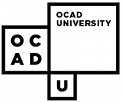Education
I was born in London, Ontario Canada . I did my Bachelor and Master of Arts degrees at the University of Western Ontario. My undergraduate was a double major in philosophy and psychology.
In obtaining a Master of Arts, I subjected faculty, staff, and students to hours of looking and pointing at various 2d shapes while peering through lenses that reduced their apparent size. The reasons for the research were: (1) previous studies had found that adaptation to minification was difficult to achieve, and (2) to investigate whether the adaptation was purely visual or involved the motor system. The results were published, and if you are really interested, go look for them in:
Scheuhammer J., Timney B. 1982 "Adaptation to Optically Reduced Size" Perception, 11, 139-152.
After the MA I journeyed to the East Pole and took up with the then Psychology department at the Massachusetts Institute of Technology. By the time I finished, the department had changed its name; thus, I have a Ph.D. in "Brain and Cognitive Sciences". For my Ph.D. I investigated how edges that ended were perceived. The title of the thesis was "Contour Completion at Edge Endings".
In the process of doing the research, I learned how to coerce (i.e. program) a Unix box to display a variety of visual stimuli. I decided that programming was more fulfilling than psychophysical research, so when I finished the degree, I sought employment as a programmer.
Employment.
Upon graduating from MIT, and returning to Canada, I joined a then new company named Discis Knowledge Research, Inc. They have since gone into receivership, but if you do a web search, I'm sure you will find a link or two.
Our first product line was information rich versions of children's books on CD-ROM, whose purpose was to help children learn to read. For example, clicking on a word in the text elicitted its pronunciation, an oral context specific definition of the word, and a second language explanation. Clicking on pictorial elements invoked a label of the pictured item, a pronunciation of the item, and a second language explanation. Clicking on a speaker icon at the beginning of a sentence cause that sentence to be read while it was hilighted phrase-by-phrase. We first released product in the summer of 1990. Examples of titles include Beatrix Potter's "The Tale of Peter Rabbit" and Robert Munsch's "The Paper Bag Princess"
The production system for these titles ran on Macintosh computers, although the end product can run on either Mac or Windows. I was responsible for developing parts of the production system; thus, I was gradually weaned away from Unix, and towards the Macintosh platform.
After eight years at Discis, I decided to move on, and am now a member of the Adaptive Technologies Research Centre at the University of Toronto, where I design and implement adaptive interfaces for internet applications. I have since migrated away from the Macintosh and now favour the Java platform. Mind you, I still use a Mac for all of my development.
Personal.
I am married to Judy and we have an eight year old son, Alistair, and a cat named Dorian.
Hobbies and other interests include fantasy role playing games, jogging, juggling, and piano.




